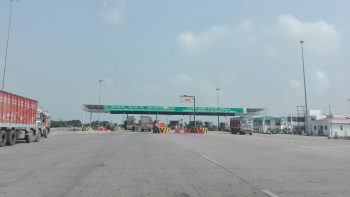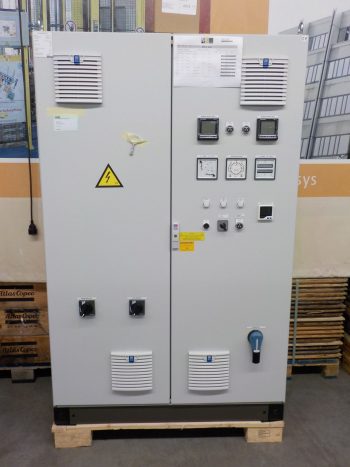Do you have a question?
If it is about control panels, we have the answer.
Battery control for indian toll station
A toll station in India is shut down for around two hours per day. Reason: general power outage. The operators are looking for a mains network-independent back-up system. The search brought them to the battery manufacturers Leclanché. “And they in turn approached us for a control panel for the entire installation”, says project manager Johan Meykens.
Imagine that you have to shut down your company operations a few hours per day. And that you know the cause, but are unable to tackle the core of the problem. This is the situation in many Indian companies. In the second largest country in the world, power supply is anything but stable.
Even the toll stations, the fixed locations along the motorways where you have to pay toll charges, are the victim of these power failures. A toll station in India suffers power outage for an average two hours per day. Since they cannot change the electricity grid themselves, they requested the operators for a method to offset these interruptions. To ensure that they remain operational even during a power outage. They thought of using lithium- ion batteries of the Swiss Leclanché to expand their grid installation. The Swiss make batteries for sectors such as production, transport and microgrids.”
Electrical ferryboat
“But the actual storage of energy was only one part of the story: the entire set-up also had to be controlled intelligently. And this is why Leclanché thought of us. We had already jointly realised a number of excellent projects. For example, the first electrical ferry boat that was ever made. But also the first fully electric buses of de Lijn. They provided the batteries, while we were responsible for the control panels.”
“We are therefore thoroughly familiar with their batteries. Even though we had been working together for quite a while, building an installation independent from the net was a first for us. What we mean to say is: we were usually given the diagrams for this type of set-up. Then there was the question of refining the design and building it immediately.”
“This time we started from scratch. We had to figure everything out on our own. Fortunately, the R&D department within P&V fully supported my team in this regard. What exactly do we need? How do we go about linking that? What is the appropriate measuring equipment for this? What does something like that cost? Is there a more cost-efficient alternative? Can that connection be made differently?” This would be followed by a discussion of our proposals with Leclanché R&D. This resulted in a prototype that they could extensively test.”
Bringing together and fine-tuning
“To ensure optimal functioning of the back-up installation, it is important that everything is coordinated with everything else. That everything is synchronised. It was up to us to ensure that there was controlled coordination between the solar panels, the generators, the batteries and the electricity grid. In case of scenario A, this is what happens. In scenario B, this is what happens. For this, we built a panel that was linked to the battery pack included in the existing grid.”
“So it’s all about bringing together and ensuring coordination. But monitoring as well. Because the Leclanché batteries require a very precise charging process. This is very delicate technology. The temperature and the voltage must be constantly monitored accurately to ensure that the correct cells are charged every time.”
“The end result is that the toll station is now completely mains network-independent whenever required. The entire story in one package. And if the tests are positive – and I am assuming they are – we will install this system to another twenty to thirty other toll stations.



